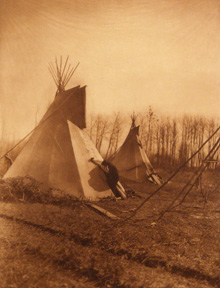North American Indian: Photos by Edward S. Curtis
Beginning in 1900 and continuing over the next thirty years, Edward Sheriff Curtis, or the "Shadow Catcher" as he was later called, took over 40,000 photographic images and recorded rare ethnographic information from over eighty American Indian tribal groups, ranging from the Eskimo or Inuit people of the far north to the Hopi people of the Southwest.
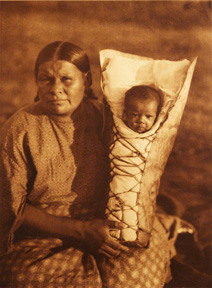
He captured the likeness of many important and well-known Indian people of that time, including Geronimo, Chief Joseph, Red Cloud, and Medicine Crow.
Curtis collected and published his years of fieldwork into twenty volumes of narrative and twenty portfolios of larger sepia-toned photogravures. The twenty volumes, each with its accompanying portfolio, are organized by tribes and culture areas encompassing the Great Plains, Great Basin, Plateau Region, Southwest, California, Pacific Northwest, and Alaska. The North American Indian was issued in a limited edition and sold just under three hundred copies.
One of Curtis's major goals was to record as much of the people's way of traditional life as possible. To that purpose, Curtis made 10,000 wax cylinder recordings of Indian language and music. In addition he recorded tribal mythologies and history, and described tribal population, traditional foods, dwellings, clothing, games, ceremonies, burial customs, biographical sketches and other primary source information: all from a living as well as past tradition. "The passing of every old man or woman means the passing of some tradition, some knowledge of sacred rites possessed by no other," wrote Curtis. "Consequently, the information that is to be gathered, for the benefit of future generations, respecting the mode of life of one of the great races of mankind, must be collected at once or the opportunity will be lost for all time."
This exhibit features twenty images reproduced from the Curtis portfolios housed in the Special Collections Department. These images were selected by Hannah McGaha, Dixie Robinson, Laura Peery, and Andie Duplantis, members of the Honors Film Studies Association, who worked in conjunction with the University of Arkansas Native American Symposium for this project.
(Click thumbnail image to enlarge.)
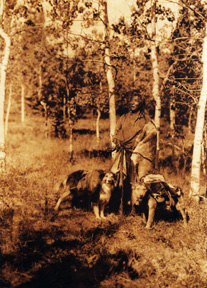
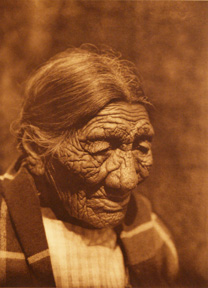
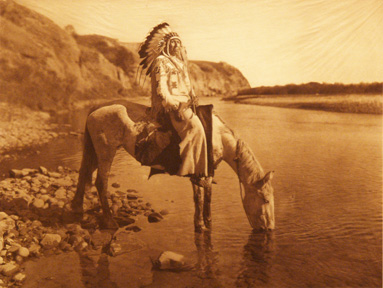

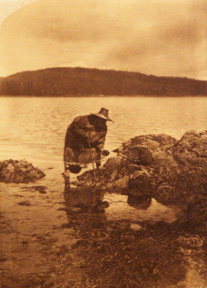
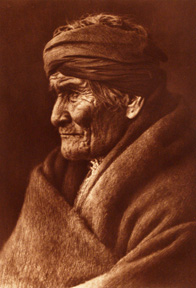
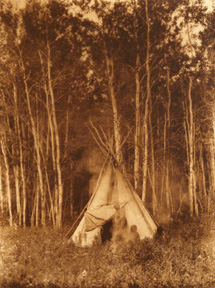
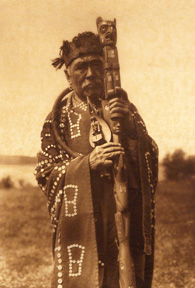
"Hamasaka in Tlu'wulahu Costume with Speaker's Staff – Qagyuhl," photogravure print with brown ink, 1914.
Volume 10, plate 333. Curtis's caption: "The principal chief of the Qagyuhl is depicted in a 'button blanket' (which is simply a woollen blanket ornamented with hundreds of large mother-of-pearl buttons), cedar-bark neck-ring, and cedar-bark head-band."
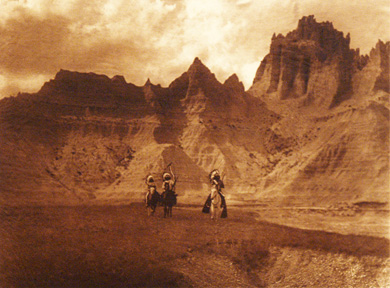
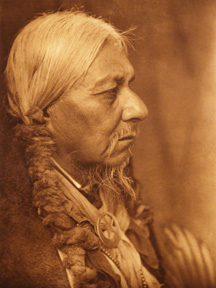
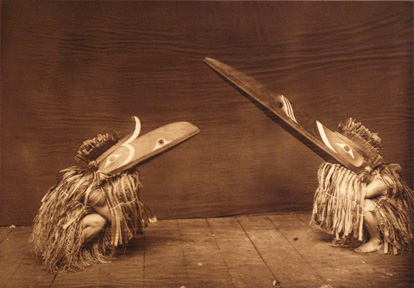
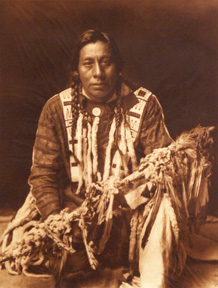
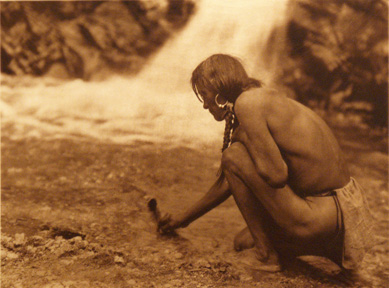
"Offering at the Waterfall – Nambe," photogravure print with brown ink, 1925.
Volume 17, plate 599. Curtis's caption: "Feather offerings are deposited in numerous shrines, buried in the earth near the pueblo, and placed in springs, streams, and lakes, for the purpose of winning the favor of the cloud-gods."
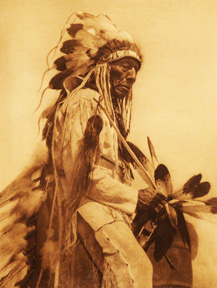
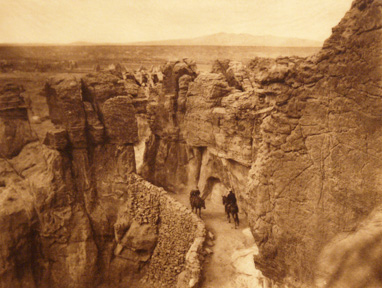
"Old Trail at Acoma," photogravure print with brown ink, 1904.
Volume 16, plate 567. Curtis's caption: "This is doubtless the trail built under the supervision of Fray Juan Ramirez, who established himself at Acoma in 1629 and subsequently built a church and a trail which horses could ascend."
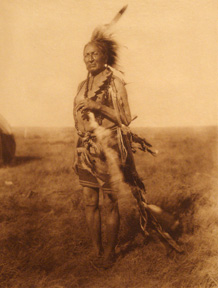
"Old Warrior – Arapaho," photogravure print with brown ink, 1927.
Volume 19, plate 673. Curtis's caption: "The Arapaho are divided into Northern and a Southern tribe, the former living on the Wind River reservation in Wyoming and the latter on the reservation assigned to them in the present Oklahoma in 1867."
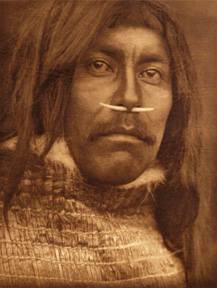
"Qa'hila – Koprino," photogravure print with brown ink, 1914.
Volume 10, plate 331. Curtis's caption: "This young chief of an almost extinct tribe resident on Quatsino sound, near the northwestern end of Vancouver island, is wearing one of the nose-ornaments formerly common among Kwakiutl nobility."
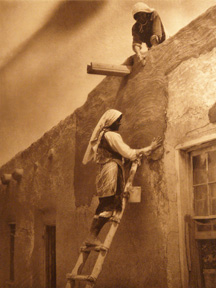
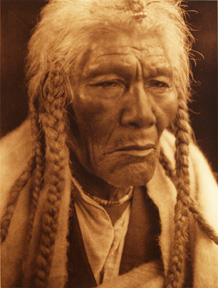
"Titishu-kghitluhl ('Deer Running')," photogravure print with brown ink, 1926.
Volume 18, plate 617. Curtis's caption: "Old Sarsi, as the subject of this plate is colloquially known, was ninety-eight years of age when the photograph was made in 1925. In spite of his years, he was still agile and keen."
